Ever driven past a road construction site and wondered what all those heavy machines are actually doing? It’s like watching a perfectly choreographed dance, bulldozers pushing earth into place, excavators scooping away soil, and pavers rolling out smooth asphalt. Building a road isn’t just about pouring concrete; it’s a step-by-step process that relies on the right equipment at every stage. From the first shovel of dirt to the final layer of pavement, each road construction machine plays its part in creating the safe, durable roads we use every day. So, let’s take a closer look at these machines that make it all happen.
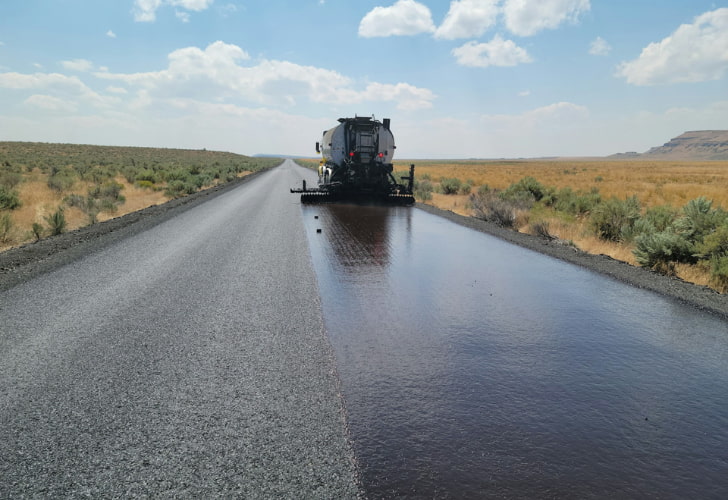
(Image Source: Photo by Tom Shamberger on Unsplash.com)
To begin with, let’s gain a brief understanding of the road construction process.
A Brief Introduction to the Road Construction Process
The road construction process begins with planning and design, where project scope, funding, and detailed designs, like dimensions, pavement, and drainage, are established. Next, the site is cleared and leveled to prepare a stable foundation. Earthworks shape and compact the terrain to ensure proper drainage. A sub-base layer is first laid to enhance support and drainage, followed by the base layer made of aggregates. Paving then involves applying a binder course of aggregates mixed with asphalt and a surface course of either asphalt or concrete . Finally, thorough inspections verify the road’s safety, durability, and compliance with standards before it is completed.
12 Types of Road Construction Machines
1. Bulldozers
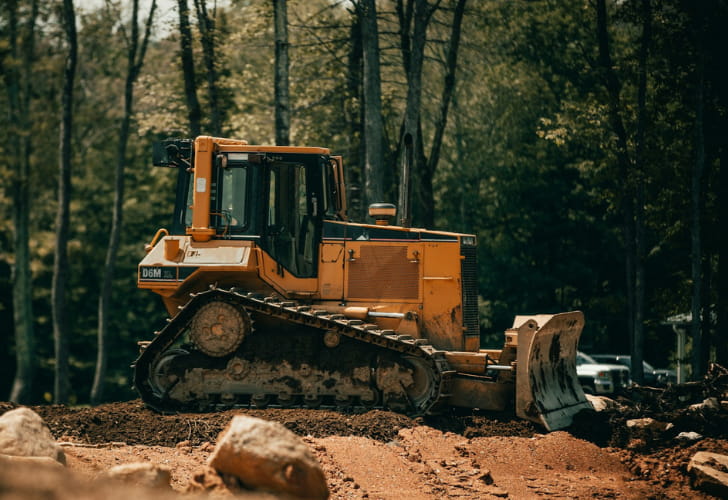
(Image Source: Photo by Billy Freeman on Unsplash.com)
Equipped with a large blade at the front, a bulldozer is designed to push materials like sand, soil, debris, and rocks on the construction site to clear and level the ground. Continuous tracks are commonly used with bulldozers, but off-road tires can also be seen. As an indispensable machine in various projects, bulldozers are widely used in road construction, mining, agriculture, and other job sites.
2. Excavators
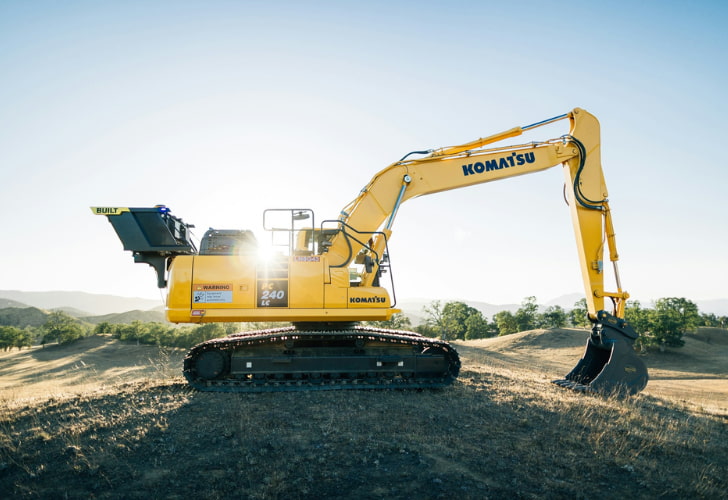
(Image Source: Photo by Built Robotics on Unsplash.com)
Excavators are extremely versatile heavy equipment that are primarily designed to dig trenches and remove earth. On road construction sites, an excavator helps handle the earthworks during the site preparation phase. But excavators aren’t limited to digging. Thanks to interchangeable attachments, they can also tackle tasks like forestry mulching, demolition, and even snow removal. Typically, an excavator consists of a bucket, cylinder, arm, boom, and cab, making it a powerful all-rounder on any construction site.
3. Dump Trucks

(Image Source: Photo by Zac Edmonds on Unsplash.com)
Dump trucks work closely with other pieces of heavy equipment, like excavators and pavers. A dump truck can be used to transport materials like dirt, gravel, asphalt, demolition debris, or even coal. It features a dump box attached to the back and powered by hydraulic rams to lift the front of the box. When the dump box is lifted, the load is released and deposited onto the ground behind the truck at the delivery site.
4. Graders
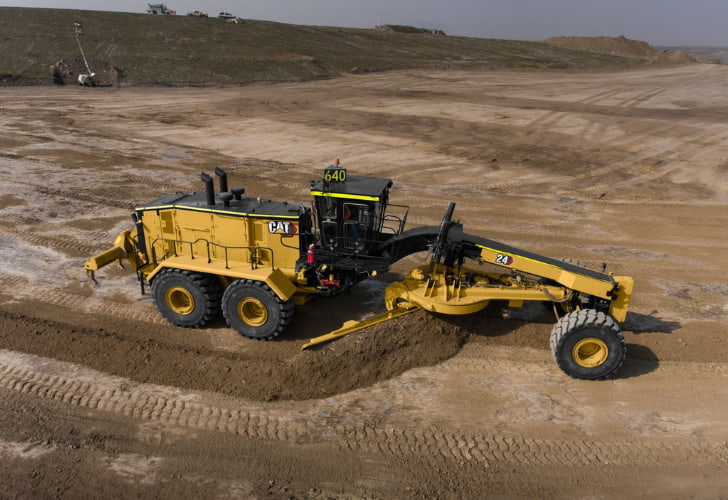
(Image Source: cat.com)
Graders, also known as motor graders, are commonly used to flatten or level the surface of the ground. As a crucial road construction machine, motor graders, equipped with a long blade, create a wide, level course to support the final surface layer. Compared with bulldozers, motor graders create a finer finish. Other optional rear attachments include a scarifier, ripper, or compactor. Steel or carbide teeth are mounted on the scarifier for a perfect finish.
5. Concrete Mixers
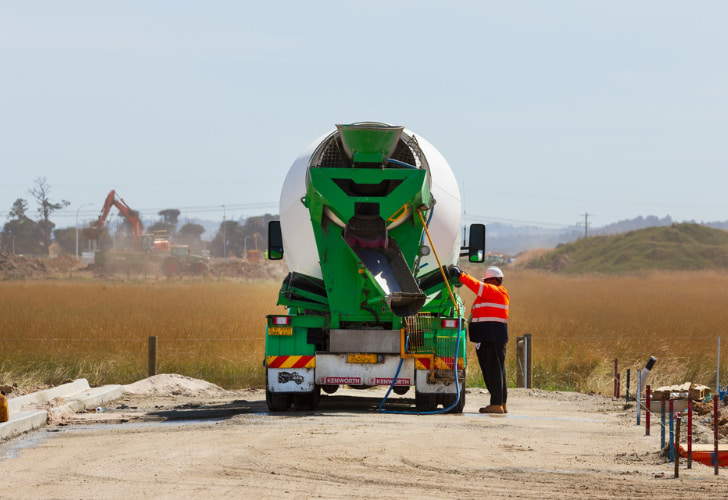
(Image Source: Photo by Troy Mortier on Unsplash.com)
Concrete mixers, also called cement mixers, are used to create concrete by mixing cement, aggregate, and water. For smaller projects, portable concrete mixers are commonly used on-site, allowing workers to prepare fresh concrete exactly where it’s needed. Stationary mixers are developed to meet the requirements of industrial production of ready-mix concrete. Additionally, concrete transport trucks, called in-transit mixers, are designed to mix concrete while transporting it to the construction site.
6. Asphalt Mixing Plants
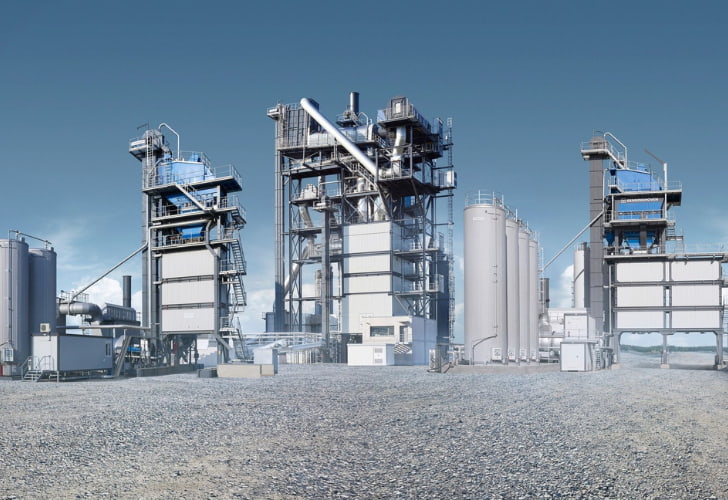
(Image Source: wirtgen-group.com)
An asphalt plant is a critical piece of road construction equipment used to produce asphalt concrete, also known as blacktop or coated roadstone. The process involves mixing various aggregates, sand, and fillers, which are then heated and coated with a binder, usually bitumen. This mixture must reach a temperature between 100 and 200 degrees Celsius to remain workable during transport to the paving site.
7. Pavers
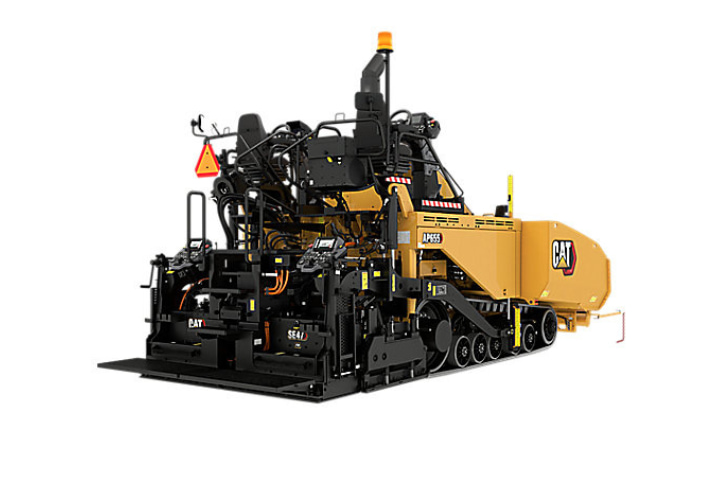
(Image Source: cat.com)
A paver, also known as a road paving machine, is a type of road construction equipment used to lay asphalt concrete or Portland cement concrete on roads. It spreads the material evenly and provides initial compaction, which is later completed by a road roller. In asphalt paving, a dump truck or a material transfer unit delivers the asphalt material into the paver’s hopper. A conveyor system moves the asphalt from the hopper to the auger, which places a stockpile in front of the screed. The screed then spreads the asphalt across the width of the road and compacts the layer mildly. Portland cement concrete is often used in building large freeways. Trucks deposit ready-mix concrete in front of a slipform paver, and the machine distributes and levels the concrete using its screed, creating a smooth, even surface.
8. Road Rollers
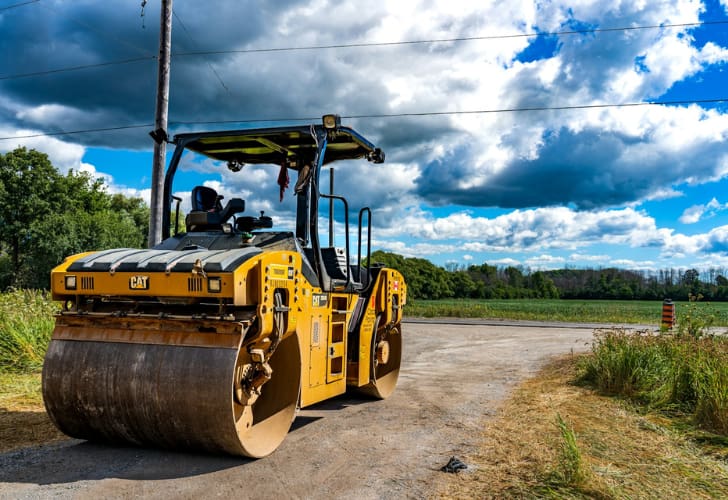
(Image Source: Photo by chris robert on Unsplash.com)
A road roller, also known as a roller-compactor or simply a roller, is a type of road construction equipment used to compact soil, gravel, concrete, or asphalt for building roads and foundations. They are also employed in landfills and agricultural projects. Road rollers vary greatly in size, from small walk-behind units (a handle and a drum) weighing around 45 kilograms (100 pounds) to massive ride-on models that can weigh up to 20 tons.
9. Wheel Loaders
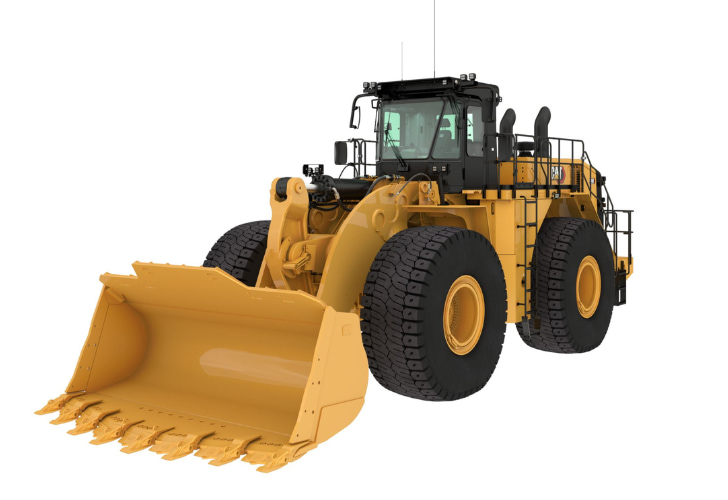
(Image Source: cat.com)
As a type of road construction equipment, a loader is typically a wheeled tractor, though sometimes tracked, featuring a wide front bucket attached to two booms (arms). Working like a huge spoon, the wheel loader is used to scoop up loose materials, including dirt and sand, and transport them without pushing them along the ground. Most loaders are wheeled rather than tracked, as wheels offer greater mobility and speed while causing less damage to paved surfaces. However, tracked loaders provide better traction and are still widely used. Modern wheel loaders are generally articulated for easier maneuvering.
10. Truck Cranes

(Image Source: Photo by Ade Adebowale on Unsplash.com)
A truck crane is a versatile piece of road construction equipment mounted on a truck chassis, combining mobility with powerful lifting capability. It is commonly used to load and unload heavy industrial materials, as well as lift and position large construction components such as precast concrete, concrete barriers, signage, and other infrastructure. In road building, truck cranes also play a key role in moving and placing heavy machinery like pavers and rollers directly on site.
11. Forklifts
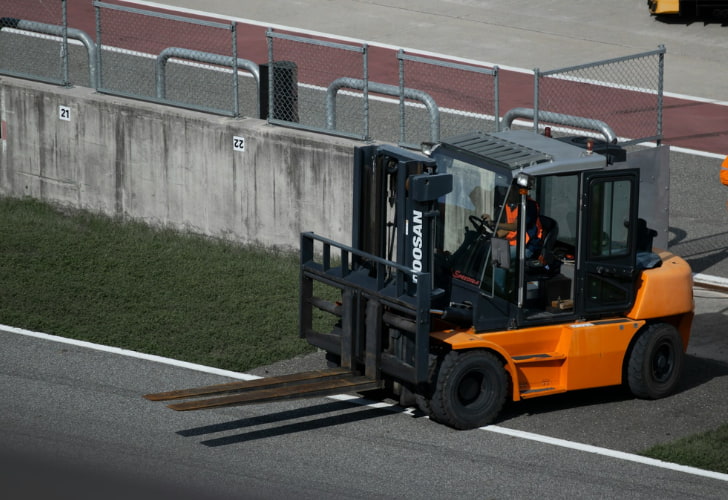
(Image Source: Photo by Bigfoot STNGR on Unsplash.com)
A forklift, also known as a fork truck or lift truck, is designed to lift and transport heavy materials efficiently around a jobsite. Originally built for factories and large manufacturing plants, forklifts have evolved to handle a wide range of tasks in construction, including road projects. Equipped with long forks at the front, they can pick up loads from ground level or higher and move them quickly to their destination. Rough terrain forklifts are especially valuable on uneven surfaces, making it easier to transport materials or equipment where trucks can’t go, helping speed up project timelines.
12. Cold Planers
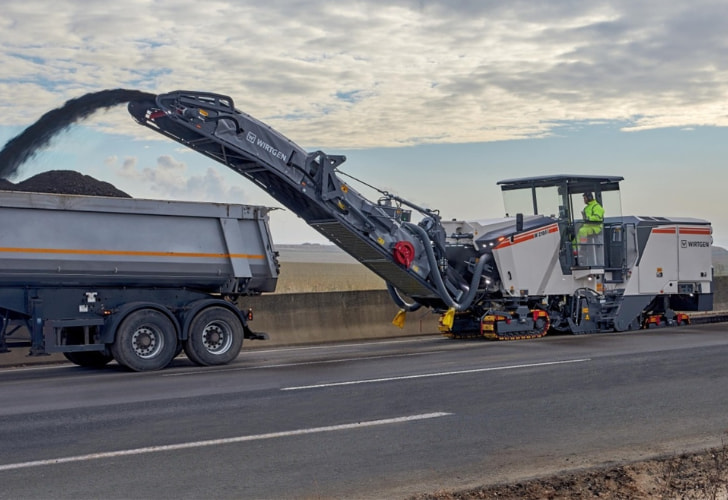
(Image Source: wirtgen-group.com)
A milling machine or a cold planer is the essential tool for removing the top layer of asphalt or concrete. By removing the old surface with a large rotating drum fitted with rows of carbide teeth , a cold planer creates a smooth, textured base that’s ready for resurfacing. This process is essential for pavement recycling, as the removed material can be reproduced as aggregate in new pavement. It’s also a great way to eliminate surface damage or bleeding, ensuring driving safety and extending the life of the roadway.
Latest Trends in Road Construction Equipment
In recent years, road construction has been evolving rapidly thanks to smart technology and sustainable practices. Nowadays, automation, AI-powered data analysis, and IoT sensors play a big role in keeping projects on track and improving accuracy.
As for the materials, innovations like bio-asphalt, steel fiber reinforced concrete, and recycled composites are not only enhancing durability but also making roads greener. Prefabricated and modular components help speed up construction while ensuring high quality. Plus, digital tools like Building Information Modeling (BIM) make planning and managing projects much smoother. All these advances are shaping a road construction industry that’s smarter, more eco-friendly, and efficient.
*All of the above images are not intended for commercial use.
